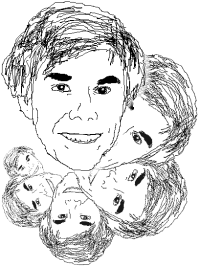 With I am a Strange Loop, Douglas Hofstadter returns – loops back? to some of the concerns he addressed in his hugely successful book Gödel, Escher, Bach, a book which engaged and inspired readers around the world. Despite the popularity of the earlier book, Hofstadter feels the essential message was sometimes lost; the new book started out as a distilled restatement of that message, shorn of playful digressions, dialogues, and other distractions. It didn’t quite turn out that way, so the new book is much more than a synopsis of the old. However, the focus remains on the mystery of the self.
With I am a Strange Loop, Douglas Hofstadter returns – loops back? to some of the concerns he addressed in his hugely successful book Gödel, Escher, Bach, a book which engaged and inspired readers around the world. Despite the popularity of the earlier book, Hofstadter feels the essential message was sometimes lost; the new book started out as a distilled restatement of that message, shorn of playful digressions, dialogues, and other distractions. It didn’t quite turn out that way, so the new book is much more than a synopsis of the old. However, the focus remains on the mystery of the self.
Is it a mystery? In a way I wondered why Hofstadter thought there was any problem about it. Talking about myself is just a handy way of picking out a particular human animal, isn’t it? In fact it doesn’t have to be human. We might say of a dog that “He wants to get in the basket himself”; for that matter we might say of a teacup “It just fell off the shelf by itself”. Why should talk of I, myself, me, evoke any more philosophical mystery than talk of she, herself, her?
I can think of three bona fide mysteries attached to the conscious self: agency (or free will if you like); phenomenal experience (or qualia); and intentionality (or meaning). Hofstadter is unimpressed by any of these. Qualia and free will get a quick debunking in a late chapter: Hofstadter shares his old friend Dennett’s straight scepticism about qualia, and as for free will, what would it even mean? Intentionality gets a more respectful, but more glancing treatment Hofstadter proposes the analogy of the careenium, which is to be imagined as kind of vast, frictionless billiard table on which hordes of tiny magnetic balls, know as simms, roll around. Occasionally the edge of the careenium may be hit by objects in the exterior world, imparting new impulses to the simms and possibly causing them to agglomerate into big rolling masses, or simmballs (the attentive reader will notice that a strong focus on the core message has by no means excluded a fondness for artful puns and wordplay). Evidently impulses from the outside world spark off neural symbols, whose interaction gives rise to our thoughts.
It would not be fair to criticise the sketchiness of this account, because it isn’t what Hofstadter is on about: it isn’t even the main point of the careenium metaphor. He acknowledges, too, that some will think talk of symbols in the brain leads to the assumption of an homunculus to read them, and to other difficulties, and he briefly indicates a response. The point really is that for Hofstadter all this is largely beside the point.
So what is the real point, and why does Hofstadter find the self worthy of attention? For him it is all about greatness of soul; friendship and the sharing, the sympathetic entering into, of other consciousnesses. This is where the loops come in.
Hofstadter quotes several examples of self-referential loops, re-creating, for example, experiments with video feedback which he first carried out many years ago. More substantially, he gives an account of how Kurt Gödel managed to get self-reference back into logical systems like the one set out in Russell and Whitehead’s Principia Mathematica. PM, as Hofstadter calls it, was a symbolic language like a logical algebra, which the authors used to show how arithmetic could be built up out of a few simple logical operations. One of its distinguishing features was that it included special rules which were meant to exclude self-reference, because of the paradoxes which readily arise from sentences or formulae that talk about themselves (as in ‘This sentence is false.’). By arithmetising the notation and applying some clever manoevres, Gödel was able to reintroduce self-reference into the world of PM and similar systems (a disaster so far as the authors’ aspirations were concerned) and incidentally went on to prove the existence in any such system of true but unprovable assertions.
This is one of the most interesting sections of the book, though not the easiest to read. It’s certainly enlivened, however, by the grudge Hofstadter seems to have against Russell: I found myself wondering whether Grammaw Hofstadter could have been the recipient of unwelcome attentions from the aristocratic logician at some stage. I’ve read many accounts which suggest that Bertrand Russell might have been, say, a touch self-centred: but it’s a novelty to read the suggestion that he might have been a bit dumb in certain respects. In this account, Gödel is the young Turk who explodes the enlivening force of self-reference within Russell’s gloomy castle: no mention here of how Russell himself had previously done something similar to the structure erected by Frege, so that Russell also has a claim to be considered a champion of paradox.
People are clearly examples of self-referential systems, but is self-reference an essential part of consciousness or merely a natural concomitant? It is plausible that self-reference might help explain why our thoughts, for example, seem to pop out of nowhere: when we try to locate the source, we get trapped into looking down a regress like the infinite corridor which appears in the video feedback. Hofstadter’s loops, moreover, are no ordinary loops – they are strange. A strange loop violates some hierarchical order, perhaps with containers being contained, or steps from a higher level leading up to lower ones. It is our symbolic ability which gives us the ability to create strange loops: to symbolise our own symbolic system, and so on. However, we are unable to perceive the lower-level neural operations which constitute our thoughts, and we therefore suffer the impression of mysteriously efficacious, self-generating thoughts and decisions, which we cannot reconcile with the sober scientific account of the physical events which really carry the force of causality.
Hofstadter spends some time on this issue of different levels of interpretation, seeking to persuade us that the existence of complete physical or neural stories does not stop accounts of causality in terms of higher-level entities (thoughts, intentions, and so on) from being salient and reasonable. He argues, intriguingly, that there is an analogy here with what Gödel did: by reinterpreting PM at a higher level, he was able to draw conclusions and in a sense set limits to what could be done within PM. In the same way we can legitimately say that our intentions were pushing the neurons around, not just that the neurons were pushing the intentions. This idea of downward causality across levels of interpretation seems metaphysically interesting, though I think it is quite redundant: the relation between entities at different levels of explanation is identity, not causation (though I suppose you can see identity as the basic case of causation if you wish).
Now things get more difficult. Hofstadter argues that bits of our own loops get echoed in those of other people, and that therefore we exist in them as well as in our own brains. If two video cameras and screens are looping and enter each other’s view, then the loop of camera A will be running, in miniature, in that of camera B, and vice versa. Our engagement with other people thus helps to create and sustain us, and in fact it means that death itself is not as abrupt as it would otherwise be, the afterglow of our own strange loops continuing to spin in the minds of others and thereby sustaining our continued existence to some limited extent. This theorising is attached to an account of Hofstadter’s reaction to the sudden, and tragically early, death of his wife.
Hofstadter does not believe that his views about death have been fundamentally influenced by this awful experience: he says that his conclusions were largely drawn before his wife’s sudden illness. All the same, the context makes it more difficult to say that, in fact, the reasoning here is wholly unconvincing. It’s just not true that the image of a feedback loop in another feedback loop remains a viable feedback loop in itself.
Hofstadter offers some arguments designed to shake our belief in the simple equation of body with person (he is happy to use the word ‘soul’, though without its usual connotations), including the one – rather tired in my view – of the magic scanners which can either relocate or duplicate us perfectly. Where a person is duplicated like this, he says, it makes no sense to insist that one of the two bodies must be the real person. “…to believe in such an indivisible, indissoluble “I” is to believe in nonphysical dualism” . Not necessarily: it might instead be to assert the most brutal kind of physical monism: we are physical objects, and our existence depends utterly on our physical continuity.
I’m afraid I therefore end up personally having a good deal of sympathy with many of the incidental things Hofstadter says while remaining unconvinced by the points he regards as most important. Whether or not you accept his case, though, Hofstadter has a remarkable gift for engaging and lively exposition, more of which will always be welcome.
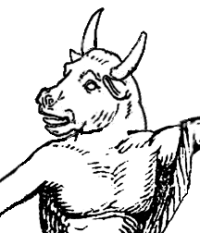 The latest edition of the JCS is devoted to personhood, a key issue which certainly deserves the attention. I’m afraid (or perhaps we should be glad?) there are a number of quite different and possibly incompatible perspectives on offer. I thought Eric T Olson’s animal problems, expounded in a careful and rather despairing paper (“What are we?”, were interesting, but not quite as bad as he thinks.
The latest edition of the JCS is devoted to personhood, a key issue which certainly deserves the attention. I’m afraid (or perhaps we should be glad?) there are a number of quite different and possibly incompatible perspectives on offer. I thought Eric T Olson’s animal problems, expounded in a careful and rather despairing paper (“What are we?”, were interesting, but not quite as bad as he thinks.
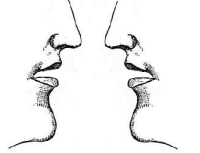 I keep an open mind on the subject of qualia, the ineffable redness of red and the equally ineffable smelliness of smell, and I always read new arguments on the subject with interest. But if I’m honest, in my heart of hearts I believe that the problem, as normally formulated, embodies a misunderstanding. That redness you see isn’t a mysterious quale; it’s just some real, extra-theoretical redness. When Mary sees something red for the first time in her life, she doesn’t gain new information or knowledge, she just has an experience she has never had before. We should not be puzzled over the fact that colour theories do not themselves contain real colours, and so cannot convey them into minds any more than knowledge about an experience conveys the experience itself.
I keep an open mind on the subject of qualia, the ineffable redness of red and the equally ineffable smelliness of smell, and I always read new arguments on the subject with interest. But if I’m honest, in my heart of hearts I believe that the problem, as normally formulated, embodies a misunderstanding. That redness you see isn’t a mysterious quale; it’s just some real, extra-theoretical redness. When Mary sees something red for the first time in her life, she doesn’t gain new information or knowledge, she just has an experience she has never had before. We should not be puzzled over the fact that colour theories do not themselves contain real colours, and so cannot convey them into minds any more than knowledge about an experience conveys the experience itself. You probably read about the recent
You probably read about the recent  With I am a Strange Loop, Douglas Hofstadter returns – loops back? to some of the concerns he addressed in his hugely successful book Gödel, Escher, Bach, a book which engaged and inspired readers around the world. Despite the popularity of the earlier book, Hofstadter feels the essential message was sometimes lost; the new book started out as a distilled restatement of that message, shorn of playful digressions, dialogues, and other distractions. It didn’t quite turn out that way, so the new book is much more than a synopsis of the old. However, the focus remains on the mystery of the self.
With I am a Strange Loop, Douglas Hofstadter returns – loops back? to some of the concerns he addressed in his hugely successful book Gödel, Escher, Bach, a book which engaged and inspired readers around the world. Despite the popularity of the earlier book, Hofstadter feels the essential message was sometimes lost; the new book started out as a distilled restatement of that message, shorn of playful digressions, dialogues, and other distractions. It didn’t quite turn out that way, so the new book is much more than a synopsis of the old. However, the focus remains on the mystery of the self.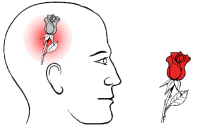 A team of researchers (Milán, Hochel, González, Tornay, McKenney, Díaz Caviedes, Mata Martín, Rodríguez Artacho, Domínguez García and Vila) have a paper in the JCS setting out their experiments with an unusually interesting subject. This person, referred to as ‘R’, is colour blind for certain colours: but he also experiences a spectrum of synaesthetic colours in which he can make the full range of clear distinctions. The team believes its research shows that qualia can be accesible and useful to science.
A team of researchers (Milán, Hochel, González, Tornay, McKenney, Díaz Caviedes, Mata Martín, Rodríguez Artacho, Domínguez García and Vila) have a paper in the JCS setting out their experiments with an unusually interesting subject. This person, referred to as ‘R’, is colour blind for certain colours: but he also experiences a spectrum of synaesthetic colours in which he can make the full range of clear distinctions. The team believes its research shows that qualia can be accesible and useful to science. Robert Lanza, well-known in the area of cloning and stem cells, has fired off a
Robert Lanza, well-known in the area of cloning and stem cells, has fired off a 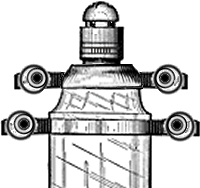 You may have read a month or two ago about the rather scary robotic sentries which have been created: it seems they identify anything that moves and shoot it. Although it has a number of interesting implications, that technology does not seem an especially exciting piece of cybernetics. The
You may have read a month or two ago about the rather scary robotic sentries which have been created: it seems they identify anything that moves and shoot it. Although it has a number of interesting implications, that technology does not seem an especially exciting piece of cybernetics. The 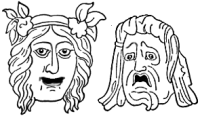 Edge has excerpted the
Edge has excerpted the 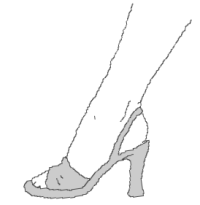 Just before you’d read this sentence, were you consciously aware of your left foot? Eric Schwitzgebel set out to resolve the question in the latest edition of the JCS.
Just before you’d read this sentence, were you consciously aware of your left foot? Eric Schwitzgebel set out to resolve the question in the latest edition of the JCS.